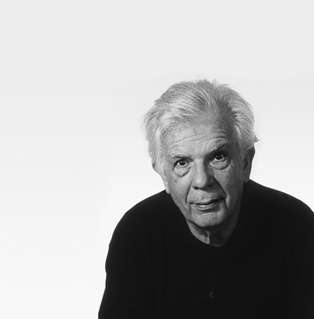|
Back
As I was saying... New York
David Geffen Hall, Lincoln Center
03/03/2016 - & March 4, 5, 8, 2016
Johannes Brahms: Ein Deutsches Requiem, opus 45
Camilla Tilling (soprano), Matthias Goerne (baritone)
New York Choral Artists Joseph Flummerfelt (Director), New York Philharmonic Orchestra, Christoph von Dohnányi (Conductor)

C. von Dohnányi (© Heinrich Hamburg)
“The Missa Solemnis, indeed, though it contains greater pages, also contains many far inferior to any in the Requiem.”
Robert Haven Schauffler, The Unknown Brahms
A German Requiem is a unique work of spirituality: a group of sacred verses assembled by an agnostic man for a new age of dubious listeners, a Festivus for the rest of us. I have heard it performed with organ accompaniment in a church back home, many orchestral efforts over the decades, and by the Vienna Philharmonic at Carnegie Hall. It even captured the imagination of American television when it was featured in a Matlock murder mystery wherein a killer eliminates one of the tenors so that there will be a new opening in the choir. The New York Philharmonic is much improved over the last few seasons and was led this evening in their newly named digs by the very distinguished and accomplished maestro Christoph von Dohnányi.
Selig sind, die da Leid tragen Heaven may be filled with violins in Mahler’s Symphony No. 4, but here the ear is immediately caught by the unusual sound of an orchestra with no violin or high woodwind parts, Brahms consciously copying the Cantata No. 106, the “Actus tragicus” of Bach. The Philharmonic usually sits with the violas in front stage left, but von D has for years seated them in the antiphonal position. With no risers employed for the instrumentalists (the singers were using them) this movement had the extra surrealism of sight, as those that we could observe simply sat quietly throughout, led in solemn contemplation by assistant concertmistress Sheryl Staples.
Denn alles Fleisch es ist wie Gras 14 years before the premiere of the Requiem, Brahms wrote a sonata for two pianos which never saw the light of day. The middle section of this work was the basis for this intense and frightening movement, wherein the strings are muted so that the brass and percussion would be all the more noticeable. Although the traditionally loudest movement, maestro spent an inordinate amount of time trying to lower the volume unsuccessfully. Instrumental blending is difficult and there was a bit of a struggle here that eclipsed some of this music’s innate drama.
Herr, lehre doch mich Matthias Goerne is a superb baritone who immediately set the right tone of humility and wonder. He is additionally a fine actor with his voice and employed a kaleidoscope of emotions. The final passages in the orchestra were really quite thrilling and the ending was excitingly paced. It was at about this time that it became clear that Christoph von Dohnányi was indeed a master craftsman.
Wie lieblich sind Deine Wohnungen Christiane Brahms died in 1865 and her son was deeply moved to honor her memory with this hymn of reconciliation and comfort. After such a whirlwind of emotion that was the third movement, von D called for a break, motioning for the amassed singers to sit and wiping the sweat from his brow. The lovely middle movement then progressed in an unprepossessing manner. Gorgeous.
Ihr habt nun Traurigkeit Rather confusingly for music historians, this lovely fifth movement with soprano solo was added to the already completed and performed Requiem in 1868, thus debunking the myth that his mother’s demise had immediately inspired the composer to add it to the mix. Interestingly, Brahms the consoler chose his texts with small “c” catholicism, never mentioning the Christ at all. When My Fair Lady previewed in New Haven, something seemed amiss and at the last minute Lerner and Loewe added what had been considered a throwaway song. “On the Street Where You Live” became the hit of the decade. Similarly, this fifth movement should have been the phosphorescent highlight of the evening except that Camilla Tilling did precious little to project or enhance the mood of the evening. She hit most of the notes fairly evenly, but never floated her voice in an ecstatic or otherworldly manner. Perhaps she was tired from sitting like a statue for so long and would have been better served to make an entrance after the break, but she never made a believer out of me, failing to elicit even a fading glimpse of the surreal or spiritual. There is a huge chasm between good and great.
Denn wir haben hie keine bleibende Statt Take that, Wagnerites! The amazing double fugue is both triumphant and unapologetic. Here the excitement was palpable and I found myself “air conducting” in spots (I am usually so well behaved).
Selig sind dieToten Full circle, the finale weaves the melodies and moods of the opening movement into a magical blanket of solace. A time for contemplation, it was worth noting that the loud sections of this performance were far superior to the softer ones, the chorus was quite competent but not without its clunkers, but overall this was a fine performance which would have been impossible for this orchestra just five seasons ago.
Fred Kirshnit
|